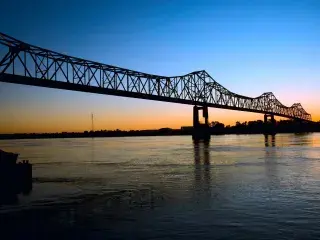Eudora
Eudora, in the southeastern corner of Arkansas, was built on a ridge rising 25 feet above the surrounding Delta flatlands. As a result, it has survived numerous disasters in the Delta, including the devastating Flood of 1927.
The area was once part of the Eudora Plantation, owned by E. C. James and named for his daughter, Frances Eudora James, who died in 1858 at age 4. In 1901, the Iron Mountain Railway began a line to connect Memphis, Tennessee, with Louisiana, traveling through Helena and other Arkansas Delta towns. By 1902, the tracks were completed through the region, and a town was laid out and named Carmel. Both the railroad stop and the re-established post office took the older name Eudora, however, and Carmel faded from history.
Eudora is known as the “Catfish Capital of Arkansas” with extensive water acres of catfish production. Agribusinesses are supported by corn, cotton, rice and soybean crops and affiliated industries. The city boasts proximity to the Mississippi River and Grand Lake, described as one of the finest fishing lakes in the country.
Other attractions include the J. Austin White Cultural Center, which opened in 2008 and supports music, art, and theater programs for children and youth; the Tommy Marshall Curiosity Center, which opened in 2019 to support STEM education opportunities and experiential learning for area students; the Eudora Garden Center, a WPA-built vertical log building on the National Register of Historic Places that was restored by the Eudora Garden Club; and the First Baptist Church of Eudora, also on the National Register, with a congregation believed to have organized as early as 1860 as one of the first African American churches in the area.
Eudora is the southernmost Arkansas town on the Great River Road National Scenic Byway.








